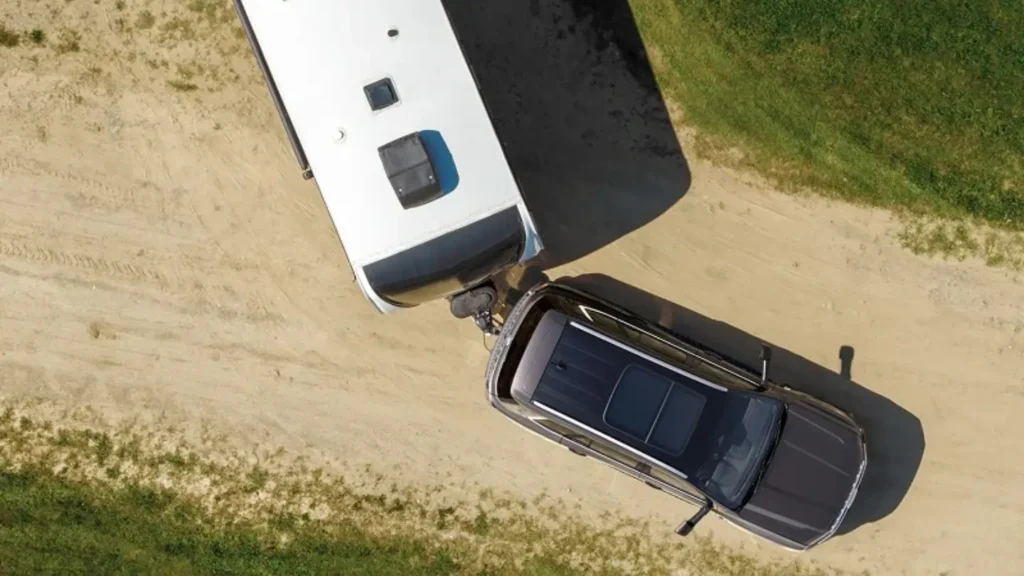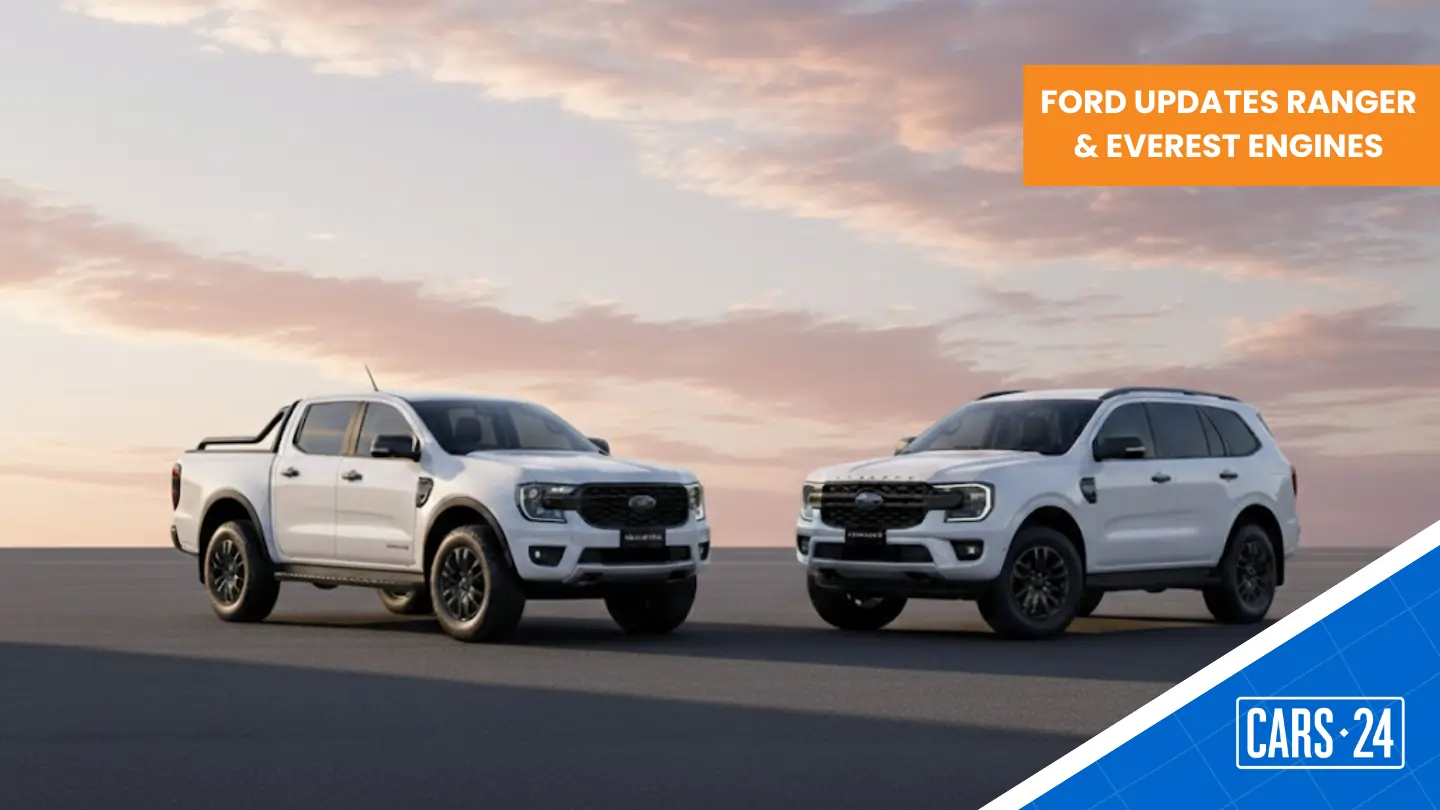Ford Australia is streamlining the 2026 Ford Ranger and 2026 Ford Everest line-up, phasing out the popular 2.0-litre Bi-Turbo diesel engine and expanding availability of the 3.0-litre V6 turbo-diesel. The changes form part of a wider powertrain update aimed at improving durability, emissions compliance, and model consistency.
10-speed Automatic becomes standard across all variants

For 2026, every automatic variant of the Ford Ranger and Everest will use the brand’s 10-speed automatic transmission, replacing the older six-speed unit. This move unifies the driveline across the range and aligns the two models with Ford’s global powertrain strategy, focused on improved refinement and fuel efficiency.
Updated 2.0-litre single-turbo diesel replaces Bi-Turbo

Ford’s revised 2.0-litre single-turbo diesel will take over as the new base engine for both Ranger and Everest models. The outgoing 2.0-litre Bi-Turbo diesel, previously the mid-tier option in the Ranger and entry-level engine in the Everest, will be discontinued globally in 2026.
The updated engine gains:
- A new fuel injection system
- A timing chain for better durability
- A 10-speed automatic in place of the six-speed gearbox
Ford says the upgrades improve performance and long-term reliability for fleet and work-focused buyers.
Current power figures (to be confirmed for 2026):

| Engine | 2.0L Single Turbo | 2.0L Bi-Turbo (outgoing) | 3.0L V6 Turbo Diesel |
| Power | 125 kW | 154 kW | 184 kW |
| Torque | 405 Nm | 500 Nm | 600 Nm |
| Transmission | 10-speed auto | 10-speed auto | 10-speed auto |
Please note: The 2.0-litre single-turbo diesel has been upgraded for 2026 with a new fuel injection system, timing chain, and the 10-speed automatic gearbox. The popular 2.0-litre Bi-Turbo diesel is being phased out globally. Meanwhile, the 3.0-litre V6 turbo-diesel will be available in a wider range of Ranger and Everest variants, giving buyers more access to Ford’s most powerful diesel engine.
More trims to receive the 3.0-litre V6 turbo-diesel

The 3.0-litre V6 turbo-diesel, previously limited to high-spec Ranger and Everest grades such as XLT, Sport, Wildtrak and Platinum, will be offered more widely in 2026.
“By focusing on the newly updated 2.0-litre turbo diesel and expanding the availability of our popular 3.0-litre V6, we’re giving customers more access to the power, torque, and refinement they love,” said Ambrose Henderson, Director of Marketing, Ford Australia. This move will give more buyers access to Ford’s most powerful diesel engine without stepping up to top-end variants.
Ford Ranger Raptor and PHEV unaffected

The Ranger Raptor continues with its twin-turbo 3.0-litre petrol V6, while the Ranger Plug-in Hybrid (PHEV) remains part of the lineup, combining a 2.3-litre EcoBoost petrol engine with a 75 kW electric motor.
Key features include:
- Electric-only driving capability
- Pro Power Onboard system for powering tools and appliances
- Lower emissions to offset diesel variants under Australia’s New Vehicle Efficiency Standard (NVES)
Prepping for Euro 6d for emissions compliance

Ford’s powertrain update also ensures the Ranger and Everest are ready for Australia’s stricter Euro 6d emissions standards, which take effect in December 2025.
Key figures include:
- NVES limit for Type 2 vehicles (utes/SUVs) in 2026: 180 g/km CO₂
- Current Ranger emissions:
- 2.0L Single Turbo – 181–195 g/km
- 2.0L Bi-Turbo – 182–189 g/km
- 3.0L V6 Diesel – 222 g/km
- Ranger PHEV – 66 g/km
Ford hasn’t yet confirmed whether the updated single-turbo diesel will be Euro 6d-compliant or require AdBlue.
Simplified lineup for 2026 launch

With the Bi-Turbo diesel retiring, the 2026 Ford Ranger and Everest will simplify to two diesel options, the upgraded 2.0-litre single-turbo and 3.0-litre V6, plus Raptor and PHEV variants for performance and efficiency.
What does this mean for buyers?
The end of the Bi-Turbo diesel is a bold move from Ford, and not everyone will be thrilled. The Bi-Turbo struck a sweet spot between price, pulling power, and efficiency, and its absence will leave a noticeable gap in the line-up.
In its place, buyers get an upgraded 2.0-litre single-turbo diesel that’s tougher but less powerful. You also get a 3.0-litre V6 that’s now available in more variants, provided you’re willing to pay for it! For fleet operators, the single-turbo’s updates should deliver better reliability and easier servicing. For private buyers, expect a price jump if you want the grunt that used to come standard with the Bi-Turbo.
Ultimately, this isn’t about more choice; it’s about Ford simplifying production and preparing for tighter emissions laws.

Comments
New Comment